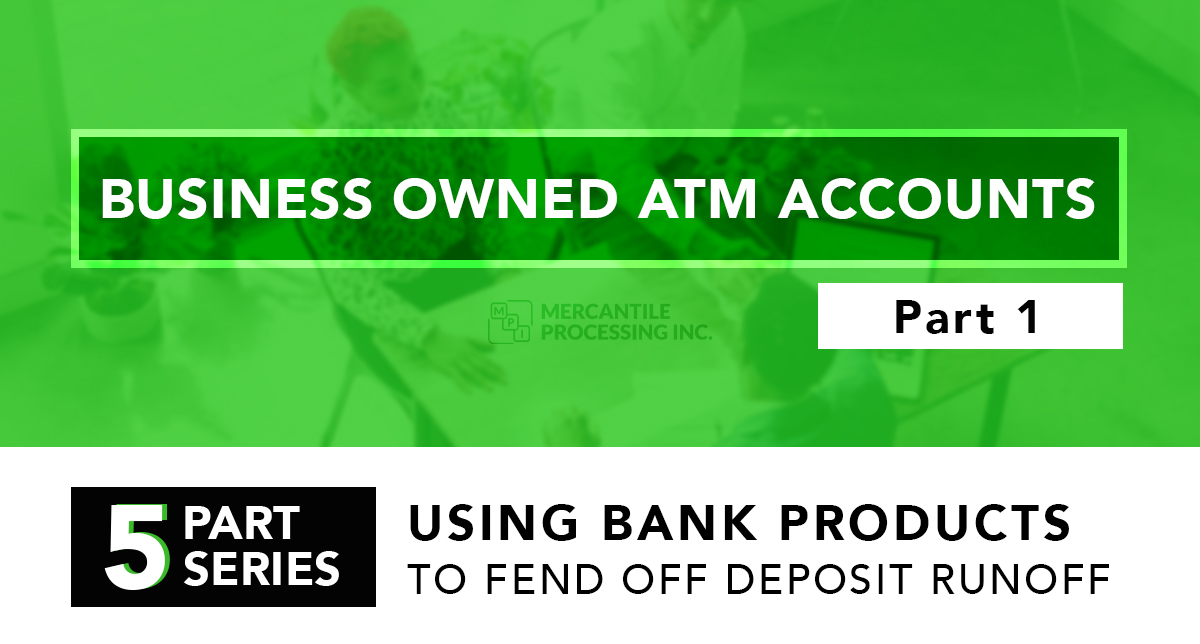
16 Jul Using Bank Products to Fend off Deposit Runoff Part 1 of a 5-Part Series
Non interest bearing deposit accounts are the gold standard for most banks in the current market. Rapid fed rate increases have put many banks in a position where their current loans have not yet ballooned and were written when the fed rate was sub 1%. This means that if banks want to continue making a profitable net interest margin they need to continue to have as many deposits as possible in non interest bearing accounts. The problem is that many banks are now capturing deposit accounts by offering 4%+ on savings accounts so some of those sedentary accounts are being moved out of the bank to accounts where they can make money. The key to stopping this runoff is to keep those funds in motion. If the merchant uses their account to run their business they are less likely to move them off the balance sheet. Making deposits sticky and/or adding new accounts has never been more important and in this five-part series, we will expose five simple products and targets to help your bank add or retain deposit volume.
Part 1: Business Owned ATM Accounts Cash and Compliance Heavy but Dependable Deposits
Merchant owned ATM machines are a steady non interest bearing deposit account. Liquor stores, convenience stores, tobacco stores, and gas stations service many of the unbanked. This means access to money is a necessity and a profit center for these merchants. Many of them own their ATMS and/or can be convinced to operate their own machines. This leads to a new deposit account. Historically these locations fill up biweekly. Either they are moving cash from their safe to the machine or withdrawing cash. This means the deposit account will receive a deposit daily for every transaction run through the machine and the account float averages at about a week’s work of withdrawals. Depending on location size and volume we are seeing an average balance of $20k-$60K.
The downside of supporting ATM deposits is the cost of compliance. Anti-moneyAnti money laundering rules require banks to account for the cash that flows through these machines. Your compliance team likely has this information and has a system to make sure these accounts are compliant, If you are targeting these deposits the two key actions are reducing friction and increasing efficiency through partnership. To reduce friction make sure the compliance team has a standard workflow and you get the business development officers who are signing up the accounts to get ahead of any paperwork and procedures. It’s much easier to put the merchant in compliance during the deposit account setup than mid year when a flag is thrown in the compliance system. Secondly choosing the right partner is very important. Find a partner that can give you and your compliance team top level reporting for deposits and surcharge income. This will reduce friction and will help you estimate deposit volumes and asset cash flow. The proper partner will also take on all service issues. The last thing you want your bankers to do is clear a paper jam in a merchant’s ATM machine. Create clear partner level expectations and ensure they align with the competition in your market before signing an agreement.
ATMS are often low hanging deposit accounts. Have the personnel that complete merchant touch in be on the lookout for ATM machines. Have them ask “do we have that deposit account ?” if not “why?”. Then explore the deposit or the whole ATM relationship. This is also a great way to get your foot in the door with a new client. Visit merchants in your footprint that don’t bank with you and start the conversation about the ATM. Merchants assume that since you are a banker you are an ATM expert. Use that to your advantage and talk about how easy it is to fill with your bank and the lack of fees on your accounts. It’s likely the easiest deposit account to move as there is only one vendor to change. These accounts are not massive but enough of them make a difference and are very sticky.
